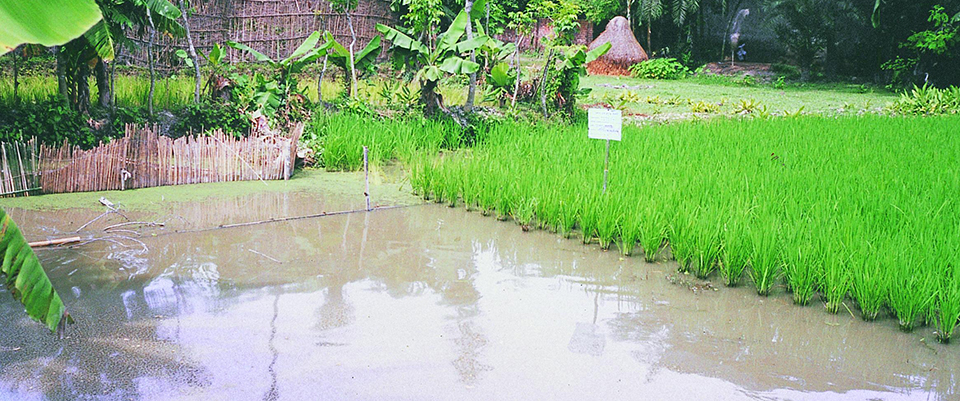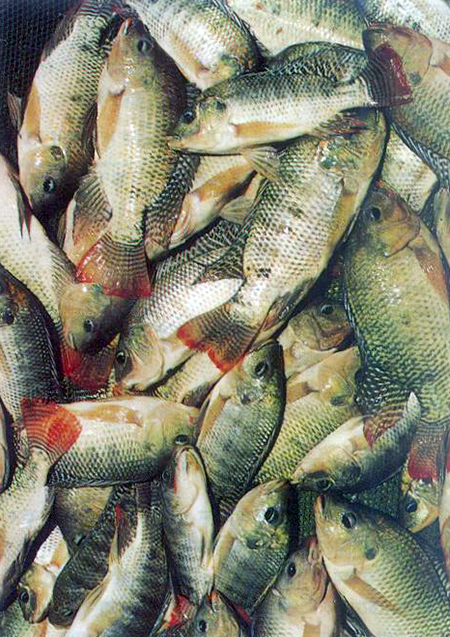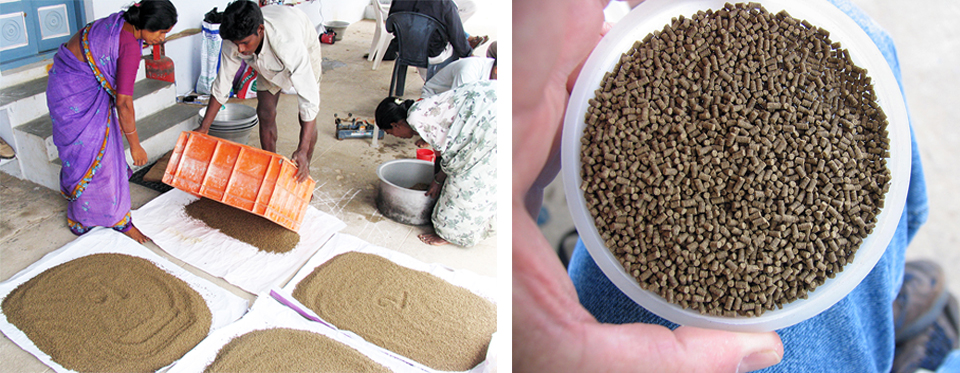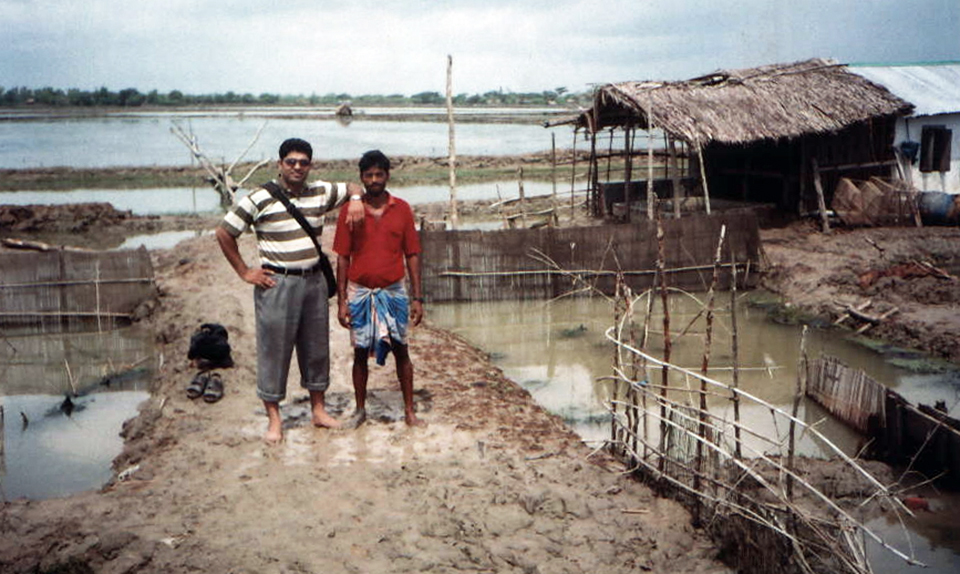Species’ rapid growth rate and easy harvest are attractive to farmers

In the deltaic, flood-prone country of Bangladesh, inland fisheries are of major importance. Tilapia have had relatively little impact as natural stocks or in managed aquaculture, but there is increasing evidence of their “silent” role in meeting poor peoples’ needs over the last decades and, increasingly, of a growing demand in formal markets.
Carp culture predominant

Until recently, aquaculture in Bangladesh was dominated by carp culture, while tilapia hardly figured in market data. The introduction of new strains such as “genetically improved farmed tilapia” (GIFT) was supposed to change the situation, but uptake and adoption has been slow, mainly because appropriate fry production and delivery systems were not introduced along with the improved germplasm.
In contrast, the introduction of exotic species such as Chinese silver carp and silver barbs to complement a range of indigenous carps was seamless over the last few decades. A well-developed, private carp hatchery and trading infrastructure ensured these fish are now common in ponds, markets, and diets.
Tilapia have often gained a foothold in aquaculture systems within polyculture with carp, or as a byproduct of coastal shrimp production systems.
Tilapia potential
Declining fish consumption, reduced yields from inland fisheries, and a cultural preference for freshwater fish improve the prospects for tilapia in Bangladesh. This is especially the case if trends in production systems elsewhere are considered – increasingly urban markets are stimulating higher-input systems for both carp and catfish. Experience elsewhere in Asia suggests that tilapia respond relatively well to intensification and can be produced more cost-effectively than the riverine carp.
Bangladesh is a growing producer of shrimp for the global market, and the related infrastructure and trading links make diversification into tilapia a greater possibility. Rapidly growing demand and firm prices in domestic markets make this development unlikely in the short term, however, and longer-term competitiveness will depend on declines in feed prices and productivity gains.
Growing awareness
As in other countries in the region, Mozambique tilapia was the original species introduced into Bangladesh in 1954. Several introductions of Nile tilapia followed in 1974 and 1987, and in 1994, the improved GIFT strain was introduced. The fish are now known to most farmers and consumers, but may be most important in the dry and least-developed northwestern Bangladesh.
Tilapia have already made important contributions to household nutrition for several decades in this area of the country. More than half of the households with ponds raised tilapia, often together with stocked carp, and proportionally more farmers relied on them in distant, drier areas.
Farmers’ opinions of tilapia revealed the high level of importance attached to production of the species. In a survey, 20 advantages were raised, but only five disadvantages. Tilapia’s ability to produce seed in ponds was identified as a major advantage, as was its rapid growth rate. Easy to harvest by hook and line, women in particular favor the species.
Seedstock issues
Unlike carp, there are no established systems for mass tilapia seed production and distribution in Bangladesh. Such systems have not been introduced by government agencies, although interest in monosex seed is high among some commercial and nongovernmental organizations. The tilapia seed currently available, mainly a byproduct of culture ponds, is of inconsistent quality.
Tilapia culture systems
Tilapia are cultured in both freshwater and coastal areas using several production systems.
Seasonal water bodies
Tilapia can be found in most of the small ponds managed by rural households, and the species is particularly well-established in northwestern Bangladesh. Seasonal ponds and rice fields have to be restocked, as the systems refill with rain or rely on feral fish entering during floods. Perennial ponds are refuges for tilapia during the dry season and are typically contiguous with much larger numbers of seasonal water bodies.
The outcomes of these systems depend largely on their productivity and overall management. Stocking quality fingerlings improves results, as does more nutrient input. Most tilapia are harvested regularly for household consumption. There is evidence tilapia from these systems are becoming more important for food security, as wild fish stocks in community water bodies decline.
Large perennial ponds
Tilapia are often present as self-recruiting stocks in perennial ponds. The production of tilapia is typically small in proportion to total fish production, but is very useful to farmers. The fish produced are mainly used for household consumption. People employed to harvest ponds sometimes take tilapia and other self-recruiting species in lieu of payment. In some cases, this has led to local trading of live breeding fish and seed that supports the spread of tilapia.
Sewage-fed ponds
Some tilapia are cultured in ponds, reservoirs, and canals in urban and periurban areas that receive sewage and other organic waste runoff. These systems depend on repeated stocking of large fingerlings, but high levels of natural food ensure that small fish can be produced within a short time after stocking. However, public health risks arise from consumption of the fish, and such culture is not encouraged.

Coastal shrimp ponds
Tilapia are a common byproduct in shrimp ponds. Even low yields of tilapia from the estimated 140,000 ha of shrimp ponds make important contributions to local fish supplies. Tilapia are harvested regularly using gill nets.
Farmers use tilapia to offset some of the risk associated with shrimp culture. While shrimp are sold in the market and exported, tilapia and other white fish are used for local consumption.
Integrated pond-based systems
The rapid growth of intensive broiler and layer chicken production in Bangladesh is beginning to stimulate the rise of tilapia culture integrated with poultry. The recent and rapid growth in interest in Pangasius sp. and Clarias sp. catfish culture has been followed by price declines, and one strategy followed by farmers is to reduce input costs and risk by switching to integrated tilapia culture. These operations are stimulating a demand for large-sized fingerlings from hatcheries. With increases in poultry production, especially to supply urban markets, the potential for integration with tilapia production has also increased.
Cages
Culture of tilapia in cages in ponds or reservoirs has produced good yields, with fish reaching marketable size within four months. Local nongovernmental organizations have been involved in supporting poor people to access community water bodies and learn about cage construction and feeding. CARE Bangladesh promotes a high-density, low-volume cage production approach among poor women.
Tilapia have proven to be a popular species and found ready markets. But dependence on off-farm feed and risk from theft and cage loss has undermined confidence among some, especially after withdrawal of project support. It appears to be an economically viable approach for better-off entrepreneurs, at least while prices for tilapia remain high.
Seedstock issues
Unlike carp, there are no established systems for mass tilapia seed production and distribution in Bangladesh. Such systems have not been introduced by government agencies, although interest in monosex seed is high among some commercial and nongovernmental organizations. The tilapia seed currently available, mainly a byproduct of culture ponds, is of inconsistent quality.
Increasing demand for high-quality seed by intensive pond and cage farmers is stimulating the development of monosex tilapia hatchery production. Contacts with commercial operations in Thailand have supported intensive hapa-based production by nongovernmental organizations, but the broader needs of the country are unlikely to be met with this approach. Consistent, large-scale production of quality monosex tilapia is problematic in many contexts, and also resource-intensive.
Tilapia are already widely distributed, and effective upgrading of fish in these systems will require a decentralized approach based on mixed-sex fish. The success of tilapia in Thailand and southern Vietnam, where tilapia became dominant in pond-based polyculture over the last few decades, occurred long before the widespread availability of monosex fish. Even now, after cage-based monoculture developed, monosex seed accounts for a minor proportion of overall production in these countries.
In Bangladesh, seed production systems must service a seasonal surge in demand after the first rains fill the many seasonal ponds, which is the traditional time for stocking fish. Monosex tilapia seed production systems are less suited to service this type of demand than the production of mixed seed integrated with spring rice, which was introduced three years ago to a small number of farmers and is now spreading rapidly.
Farmer-produced fingerlings
The concept of many farmers producing small numbers of large tilapia fingerlings in adapted rice fields for local use is an alternative approach to the conventional promotion of seed production by a few rich people. Targeting poor people by using rice fields to produce large tilapia fingerlings has several important advantages, including:
- Only a few broodfish are required for each household. This allows many people to benefit directly through the production of seed as a byproduct of their staple rice crops.
- Many small producers means more opportunities for local trading and reduced trading risks. This encourages more poor people to become involved and benefit.
- Rice farmers can diversify without significantly increasing costs. Preliminary trials suggest attractive returns on a modest investment are possible.
- The rapid development of trading networks provides potential for links with intensive cage and pond producers.
Because of its simplicity, the approach can be extended to a larger number of farmers cost-effectively through farmer-field schools. Moreover, once established, it becomes a self-sustaining practice requiring no further support. Ongoing studies are investigating the adoption process and nature of the benefits attained by rice field-based tilapia seed production.
Conclusion
In Bangladesh, tilapia grow-out in different types of culture systems has shown value to both current and future fish producers. Both rural and urban consumers are likely to benefit from more widespread stocking of tilapia within conventional polyculture and intensive monoculture systems. Ensuring the availability of improved strains at the farm gate is critical to this development, as well as consistent seedstock quality.
Production of monosex Nile tilapia is likely to become established in the private sector, but its high investment requirement and need for critical resources mean its impacts will be localized and mainly accessed by more-intensive producers. On a pilot scale, decentralized production of high-quality strains in seasonal rice fields was found technically appropriate while delivering benefits to many people.
(Editor’s Note: This article was originally published in the August 2003 print edition of the Global Aquaculture Advocate.)
Now that you've reached the end of the article ...
… please consider supporting GSA’s mission to advance responsible seafood practices through education, advocacy and third-party assurances. The Advocate aims to document the evolution of responsible seafood practices and share the expansive knowledge of our vast network of contributors.
By becoming a Global Seafood Alliance member, you’re ensuring that all of the pre-competitive work we do through member benefits, resources and events can continue. Individual membership costs just $50 a year.
Not a GSA member? Join us.
Authors
-
Benoy Kumar Barman, D.Tec.Sc.
Institute of Aquaculture
University of Stirling
FK9 4LA
Scotland, United Kingdom[109,111,99,46,111,111,104,97,121,64,121,111,110,101,98,107,98]
-
David C. Little, Ph.D.
Institute of Aquaculture
University of Stirling
FK9 4LA
Scotland, United Kingdom -
Dr. Johannes Janssen
ICLARM
The World Fish Center
Banani, Dhaka, Bangladesh
Related Posts

Health & Welfare
10 paths to low productivity and profitability with tilapia in sub-Saharan Africa
Tilapia culture in sub-Saharan Africa suffers from low productivity and profitability. A comprehensive management approach is needed to address the root causes.

Aquafeeds
A look at India’s fish feed industry
India's fish-farming industry makes limited use of modern feeds, providing potential for the feed sector to grow. Commercial feeds are predominantly used for pangasius farming, followed by a rising popularity in carp culture.

Intelligence
Bangladesh seeks more buck for its ‘bagda’
As more than 80 percent of Bangladeshi shrimp exports already go to EU markets, a consultation meeting involving buyers from the bloc and Bangladesh industry stakeholders and authorities was held at the end of last month in Utrecht, the Netherlands.

Intelligence
Evolution of shrimp farming in Bangladesh
The social and environmental improvements – in combination with job-generating foreign investment – have led to wide acceptance of shrimp farming in Bangladesh.


